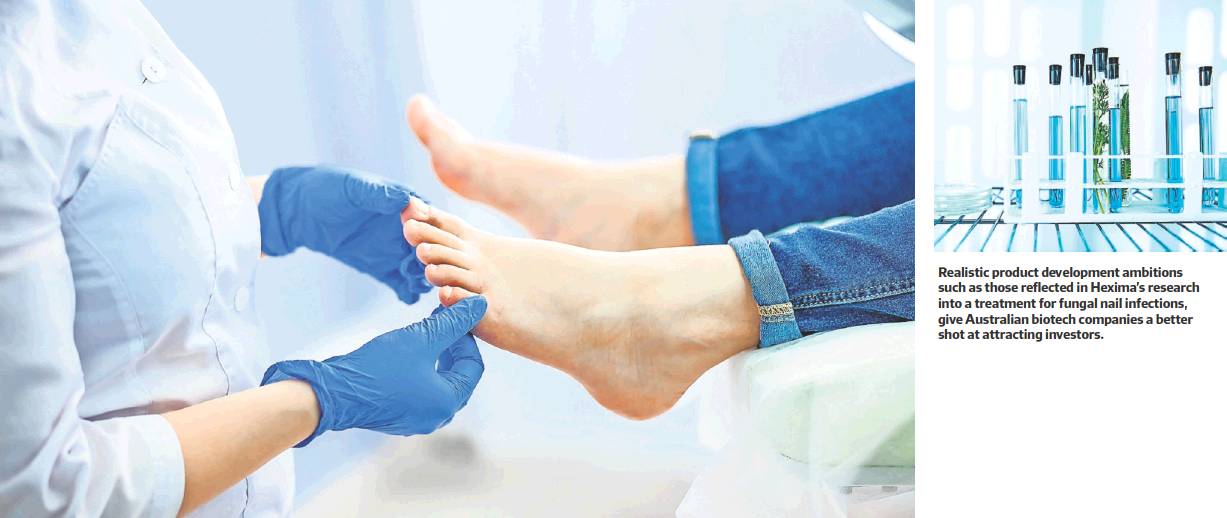Niche products best option for biotechs
The science may be excellent, the researchers may be dedicated and the heart of the nation may be willing. Universities want to pursue the science and expand the research, and venture capitalists want to ride the successes.
But getting Australian bio-technology innovations from the research stage, through clinical trials and on to commercialisation is an enormously frustrating and ongoing challenge.
Taking a discovery through the protracted clinical development phase can be expensive and it is inherently risky. Locating funders prepared and patient enough to take that long-term risk is hard.
There have been some rare but notable successes in Australia, the stand-out being CSL, which was sold by the Commonwealth in 1994 and floated on the Australian Stock Exchange. It is now capitalised at more than $135 billion.
ResMed was also successful in breaking through. The medical devices company, now based in San Diego and listed in Australia and the US, has a market capitalisation of more than $40 billion.
Another example was Peplin. Founded by researcher Dr Jim Aylward in the late 1990s, Peplin’s researchers developed a topical gel to treat pre-cancerous skin lesions. The company listed on the ASX and, after extending its development operations to the US, managed to finance all three stages of clinical trials independently.
By 2009, Peplin had completed its product development, finished Phase III trials and was ready for the next stage: bringing its product to market. At that point, it was acquired by the Denmark-based dermatology group, LEO Pharma, for $US287.5 million. LEO Pharma has since withdrawn the gel from sale.
Michael Aldridge, a former investment banker who was Peplin’s chief executive, a director and then consultant from 2003 to 2009, has just helped steer another biotechnology company, Hexima, back onto the lists of the ASX after an absence of nine years.
Hexima’s recent $5.5 million private placement, followed by a $3 million public offering was oversubscribed. Shares began trading on December 1, and the company now has what Aldridge says are enough funds in the bank to pursue Phase IIb trials of a potentially promising product to treat onychomycosis (or fungal nail infections).
This condition is caused by a persistent fungal infection that results in toenails and fingernails becoming discoloured or blackened, brittle or disfigured. It is surprisingly common, affecting about 14 per cent of the population, especially elderly people, diabetics and some athletes.
“Drug development is an expensive exercise,” Aldridge says. “Doing it independently, as we did at Peplin and are planning to do at Hexima, is obviously pretty challenging.
“But the particular area we are working in is really attractive for biotech companies in Australia to contemplate. It doesn’t require masses of studies involving thousands of patients and it’s relatively inexpensive.
“Peplin was a dermatology company developing a topical product to treat pre-cancers, ‘sun spots’, and, again, Hexima is an Australian company developing a topical product to treat a very common condition, fungal nail infections.”
Aldridge says because these sorts of products are more “niche” and more modest in their ambition, they are the kind of goals the Australian biotech industry could comfortably contemplate.
“I mean, we are not trying to cure cancer, we are not doing these big global product development initiatives,” he says. “We are doing something that is well within our resources.”
Hexima’s chief operating officer, Nicole van der Weerden, who has been the prime driver behind the company for several years, says onychomycosis is a particularly frustrating disease to treat. Although there are topical treatments in the market, their efficacy in killing the fungus is limited and the ointments must be applied daily for up to a year.
Oral anti-fungal medications are problematic, too, and not recommended for people with heart conditions or liver disease.
Hexima’s novelty is that its topical liquid, based on the plant-derived molecule HXP124, can penetrate the nail. Aldridge says in its first clinical trial HXP124 demonstrated a high mycological cure rate of 52 per cent, almost double the rate of rival products.
Dr van der Weerden says an ongoing Phase IIb trial, enrolling up to 132 patients in Australia and New Zealand, will test for optimal dosing, hopefully significantly reducing the treatment period from the typical year to just a few months.
“The challenge of putting a topical medication on every day, for the next 12 months, is just beyond your typical Western consumer,” Aldridge says. “We are developing this for the US market, and the consumer and the way they use it, and their preference for your product is a really critical part of the selling exercise.
“We have focused on a convenient, attractive and easy-to-use product that people who are suffering from this disease will gravitate to. It’s a very powerful marketing message.”
Aldridge says Australia does have some investors who understand the risks and the potential rewards of biotech investment, but the depth and sophistication of its venture capital market is nowhere near that of the US or Europe.
“In Hexima’s case, we just have an extraordinarily supportive register … which includes some of Australia’s wealthier family offices,” he says. “They have been critical to the development of this program to date.”
If Hexima can push through the next phase of trials successfully, those investors may well reap significant rewards.
